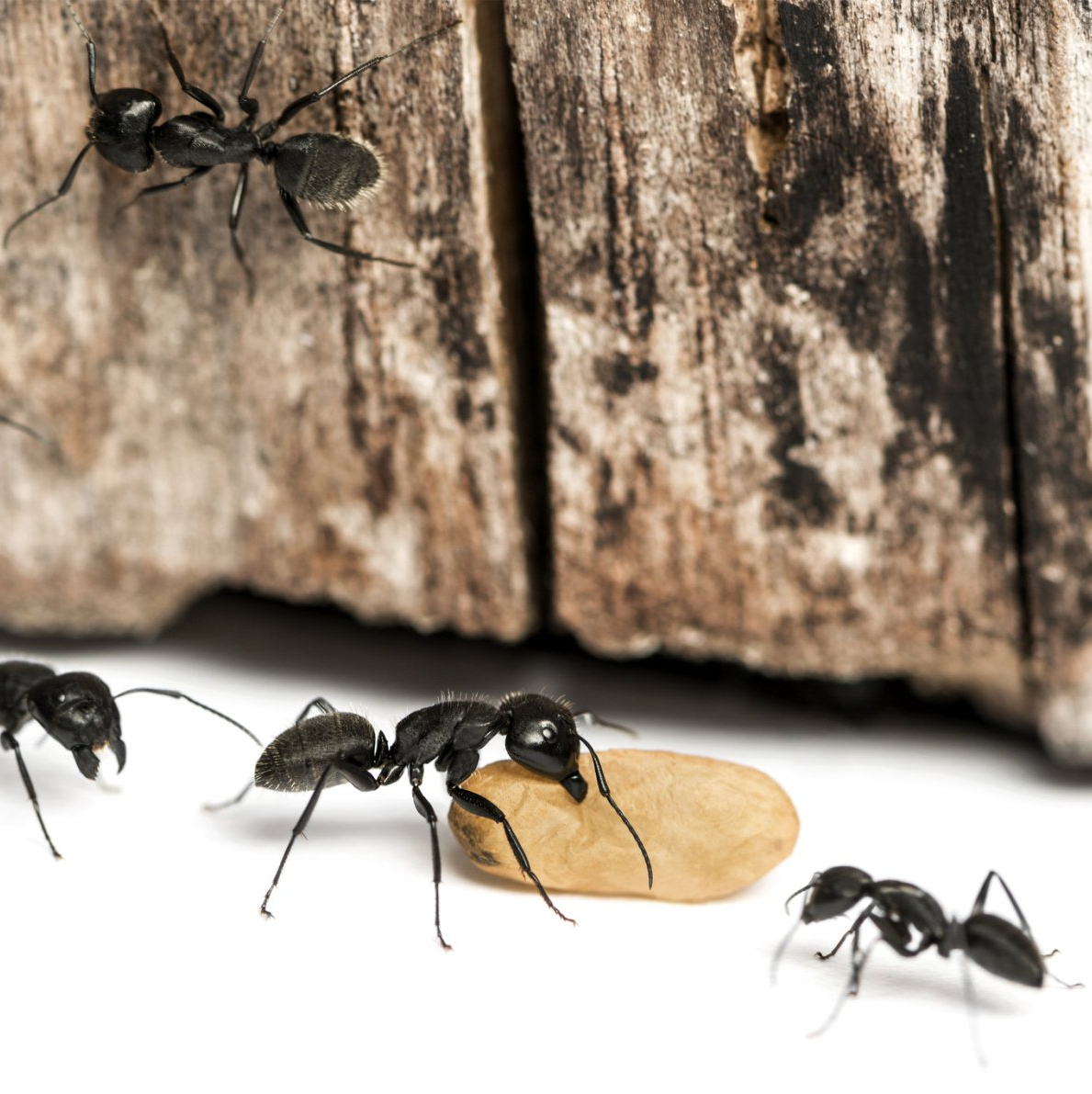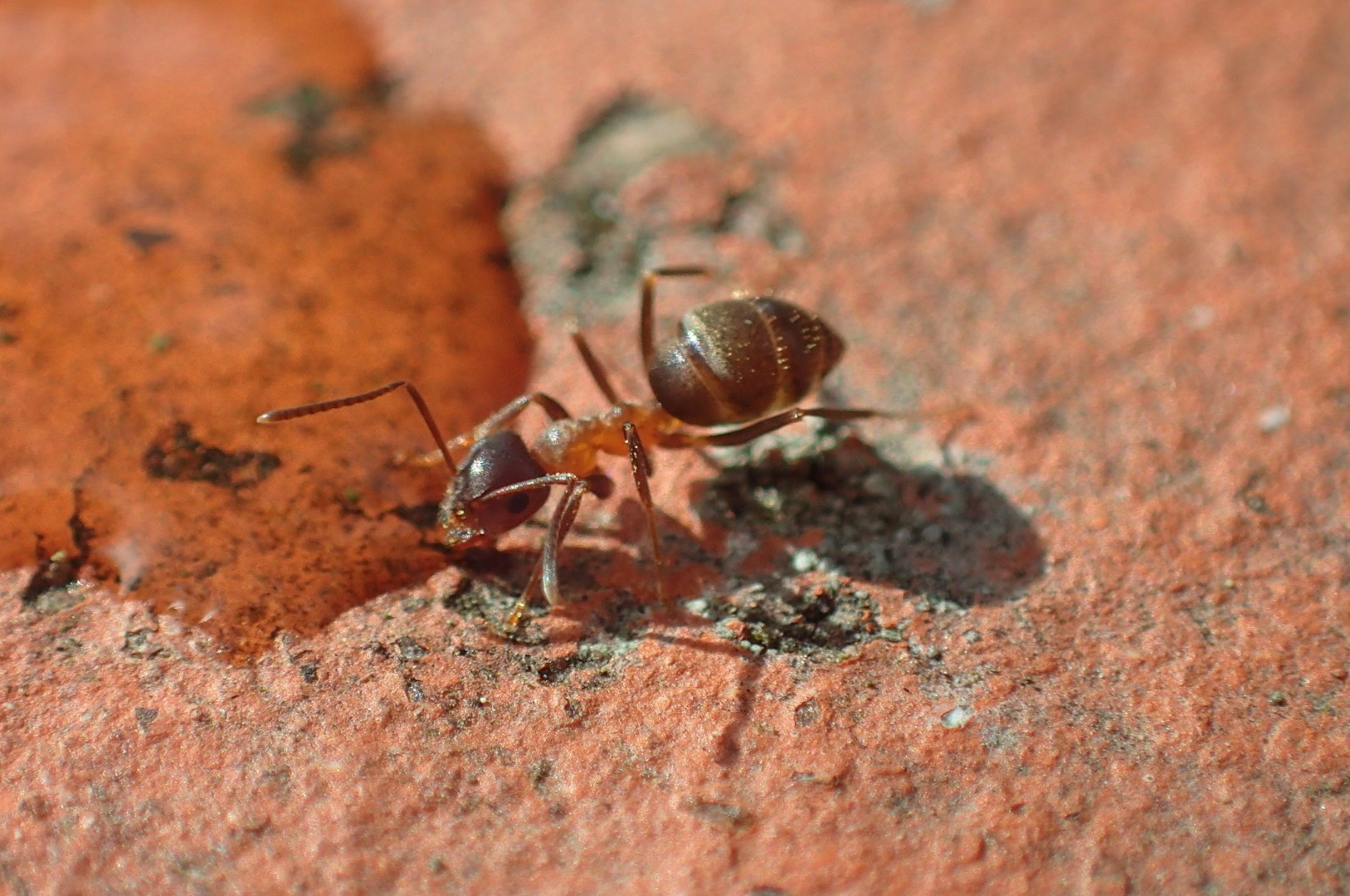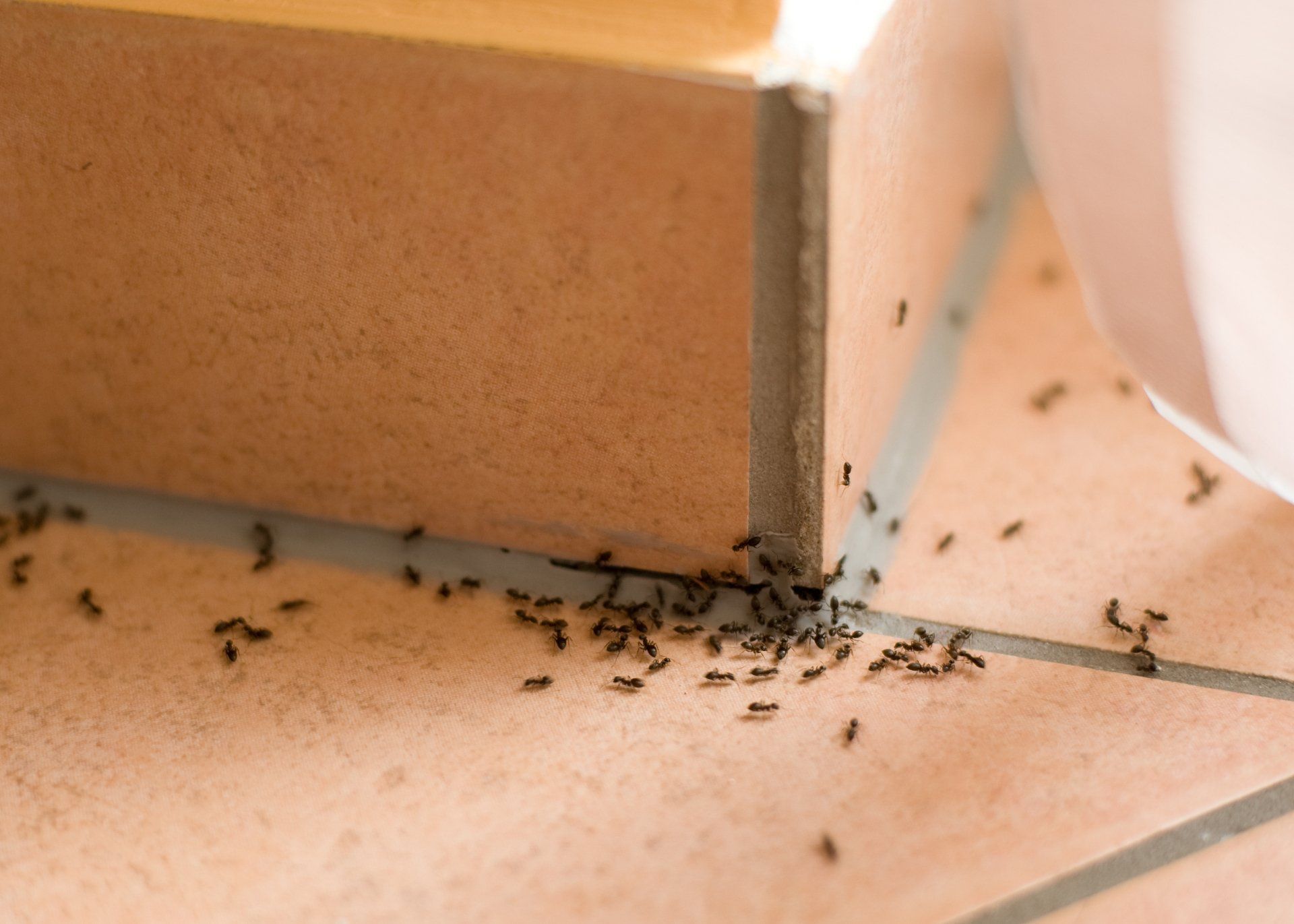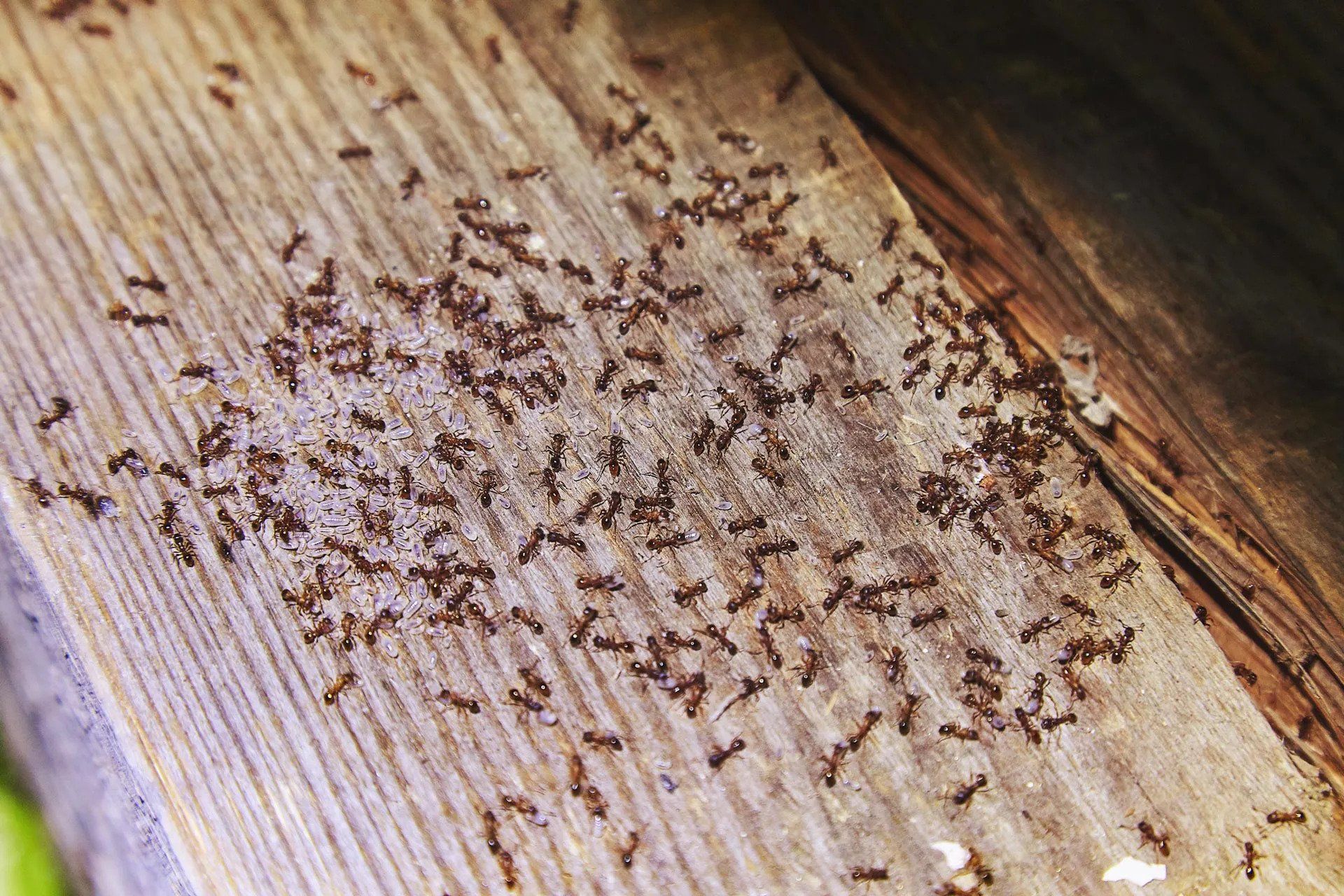ANTS
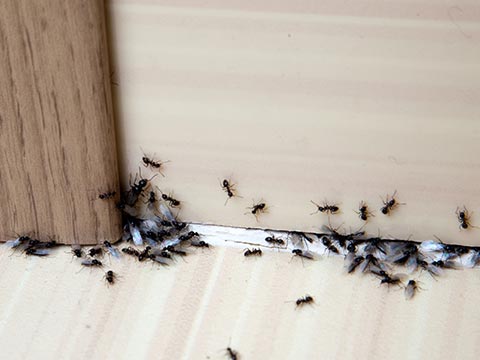
All ants are social insects, which is why ants typically occur in large numbers. Social insects have several advantages over their non-social insect cousins. First, social insects work together to gather food and resources, increasing the efficiency of both.
Second, there's a dedicated group of insects tasked with caring for the colony's young, guaranteeing the nest's long-term growth. Finally, the colony members work together to defend the nest, increasing the chance of successfully warding off predators.
The first step in controlling these pests is to identify what kind of ants. This allows us to know the biology and behavior associated with the target pest.
The first ant causes the most structural damage and is among some of the largest of the ants encountered by PMPs. Carpenter ants belong to the genus Camponotus. This is a huge group, with more than 1000 different species worldwide, with an estimated 40 species occurring in the United States. Still, only half of that has been identified as "pest" in urban environments.
Carpenter Ants
Carpenter ants cause damage by excavating into sound wood or previously damaged wood. This excavation creates nesting sites, and in many parts of the US, carpenter ants are considered rivals to termites when it comes to structural damage. This behavior allows the ants to create galleries to house the colony as well as brood. In nature, trees and logs are accessed via cracks, knot holes, or decayed areas where wood and debris are removed to the house, a growing colony.
Most foraging occurs at night, with sunset being the most common time for ants to forage. As temperatures increase, they can also become nocturnal, feeding at night to escape the elevated temperatures. A carpenter ant forager can travel more than 100 yards from its nest in search of food. Carpenter ants do not eat or consume wood; instead, they feed on protein sources, such as dead insects, and carbohydrate sources such as honeydew, typically produced by aphids and scale insects.
Pavement Ants
(tetramorium caespitum)
These commonly encountered dark brown to black ants commonly infest urban areas and especially like living in and around buildings, sidewalks, driveways, and other structural elements. Pavement ants will eat nearly anything. Their foraging trails can reach distances up to 30 feet. Pavement ants can also have many queens, but nest under rocks and pavement can be found in ground-level masonry walls, under floors and insulation. Pavement ants are one size and do possess a stinger, although people are usually not stung easily by these ants. These ants are attracted to moisture, so eliminating excessive water around structures helps prevent and keep things clean indoors.
Odorous House Ants
(Tapinoma sessile)
Odorous house ants can have vast colonies but tend to have several thousand workers and many queens in natural colonies. Odorous house ants prefer to feed on sweets and are very fond of honeydew. They nest near moisture sources such as in wall voids near water pipes, in heaters, beneath leaky fixtures, and inside wood damaged by termites. Outdoors, these ants access structures via tree branches and other overgrown landscaping touching the structure and utilizing voids for harborage. They are also known to move their nests every three months or so in response to rain. This ant can be difficult to control with the multiple queen facet and its habit of temporary nesting sites.

